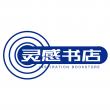
海洋工程柔性立管与海底管道设计及分析
正版保障 假一赔十 可开发票
¥ 70.62 4.7折 ¥ 150 全新
库存117件
广东广州
认证卖家担保交易快速发货售后保障
作者Svein S?vik,Naiquan Ye[著]
出版社西南交通大学出版社
ISBN9787564344665
出版时间2015-11
装帧平装
开本其他
定价150元
货号8677536
上书时间2024-08-28
- 最新上架
商品详情
- 品相描述:全新
- 商品描述
-
作者简介
萨维克,has been a prnfessor of marine structures at the Norwegian University of Science and Technoloogy (NTNU) since 2009. He has decades of experience in pipeline engineering, covering most aspects of structural design and analysis of offshore pipeline systems. He has also spent more than 20 years working as a rescarcher focusing on development of models for stress and fatigue analysis of flexible pipes and umbilicals. Part of Ibis has been the development of several non-linear finite element codes for global and local analysis of pipelines, flexible pipes and umbilicals that arc widcly used by the industry. This includes the SIMLA program for global response analysis of pipelines, the BFLEX program fur stress anlysis of flexible pipes, the USAP program for stress analysis of large pitch length umbilicals and the UFLEX program for stress analysis of short pitch length umbilicals. Professor Savik has published a large number of journal and conference articles within these topics and received various awards for his work including the Statoil award.
目录
CHAPTER 1 Introduction
1.1 General remarks
1.2 The design process
1.3 Engineering phases
1.3.1 Steel pipelines
1.3.2 Flexible pipes
CHAPTER 2 Design Principles
2.1 General remarks
2.2 Design formats
2.3 Discussion of relevant loads
2.4 Discussion of failure modes
2.4.1 Mechanical failure modes for steel pipelines
2.4.2 Mechanical failure modes for flexible pipes
2.5 Cross—section design
CHAPTER 3 Steel Pipeline Design
3.1 General remarks
3.2 Stress and strain components
3.3 Wall thickness design
3.3.1 The hoop stress (bursting) criteria
3.3.2 External pressure collapse
3.4 Design against other relevant failure modes in steel pipelines
3.4.1 Buckling due to combined loads
3.4.2 Fatigue
3.4.3 Other mechanical failure modes
CHAPTER 4 Mechanical Behaviour of Flexible Pipes
4.1 General remarks
4.2 Governing stress components
4.3 Wire geometries
4.4 Behaviour due to axi—symmetric loads
4.4.1 General
4.4.2 Axial loading
4.4.3 Torsion
4.4.4 Internal and external pressure
4.5 Behaviour in bending
4.5.1 General
4.5.2 Minimum bend radius
4.5.3 Stresses and stress resultants related to the tensile armour
4.5.4 Stresses related to the pressure armour
4.6 Buckling
4.6.1 Carcass collapse
4.6.2 Tensile armour buckling
4.7 Fatigue
4.7.1 General
4.7.2 Mean stress correction
4.7.3 Mean and dynamic stresses in the tensile armour
4.7.4 Mean and dynamic stresses in the pressure armour
4.7.5 The effect of corrosion failures in terms of bursting and fatigue performance
4.7.6 The effect of corrosion in terms of lateral wire buckling
4.7.7 The link between global and local analysis
4.8 Computational methods
4.8.1 General
4.8.2 Axi—symmetric stress analysis
4.8.3 Bending and fatigue stress analysis
4.8.4 Spe cases
CHAPTER 5 Heat Transfer and Thermal Insulation
5.1 General remarks
5.2 The heat transfer coefficient
5.2.1 Conduction
5.2.2 Convection
5.2.3 Influence of soil burial
5.3 The temperature profile
5.4 Time to reach critical temperature
CHAPTER 6 Steel Pipeline Material Selection and Welding
6.1 General remarks
6.2 Material selection
6.3 Pipeline welding
6.3.1 General
6.3.2 Welding processes
6.3.3 Non—destructive testing
CHAPTER 7 Pipeline Installation
7.1 General remarks
7.2 Pipeline installation methods
7.2.1 Controlled depth tow method
7.2.2 J—lay
7.2.3 S—lay
7.2.4 Selection of method
7.3 Pipeline installation analysis
7.3.1 The effective tension concept and Archimedes law
7.3.2 The catenary equation
7.3.3 Minimum horizontal radius
7.3.4 Residual radius and roll
CHAPTER 8 Global Buckling
8.1 General remarks
8.2 The process of buckling
8.3 Analytical global buckling model
8.4 The significance of different parameters included in an upheaval buckling analysis
8.4.1 Formulation of the upheaval buckling failure function
8.4.2 Input parameters and failure function
8.4.3 The Hasofer—Lind reliability index
8.4.4 Results
CHAPTER 9 The Finite Element Method as Applied to Slender Structures
9.1 General remarks
9.2 Basics of the finite element method
9.3 Non—Iinear effects
9.4 Strain and stress measures
9.5 Non—Iinear finite element methods
9.5.1 Equilibrium equation
9.5.2 Non—Iinear formulations
9.5.3 Material law—plasticity for metals
9.5.4 Solution techniques
9.6 Description of some elements of general relevance for global analysis of slender structures
9.6.1 General
9.6.2 Pipe elements
9.6.3 Seabed contact element
9.6.4 Roller contact element
9.6.5 Pipe—in—pipe contact element
9.7 Description of elements related to global and local response of flexible pipes and umbilicals
9.7.1 General
9.7.2 Helical beam elements
9.7.3 Associated elements
……
CHAPTER 10 Modelling and Analysis Examples
Bibliography
精彩内容
本书主要针对柔性海洋结构和柔性管机械行为分析相关的有限元知识,与海洋立管相关的材料及其成型加工技术,海底管道热传导,海洋洋流载荷及海底土壤接触约束条件,重点以海底铺架管道、深海用柔性管道及其海底用脐带管为主,从理论设计、应用等进行阐述,**次将这两种管线的核心设计理念融合在一起阐述,将二者异同交叉阐述,既避免了重复阐述,又强调了这两种管道的核心差异。本书具有鲜明的行业特点和性及前沿性。
— 没有更多了 —












以下为对购买帮助不大的评价